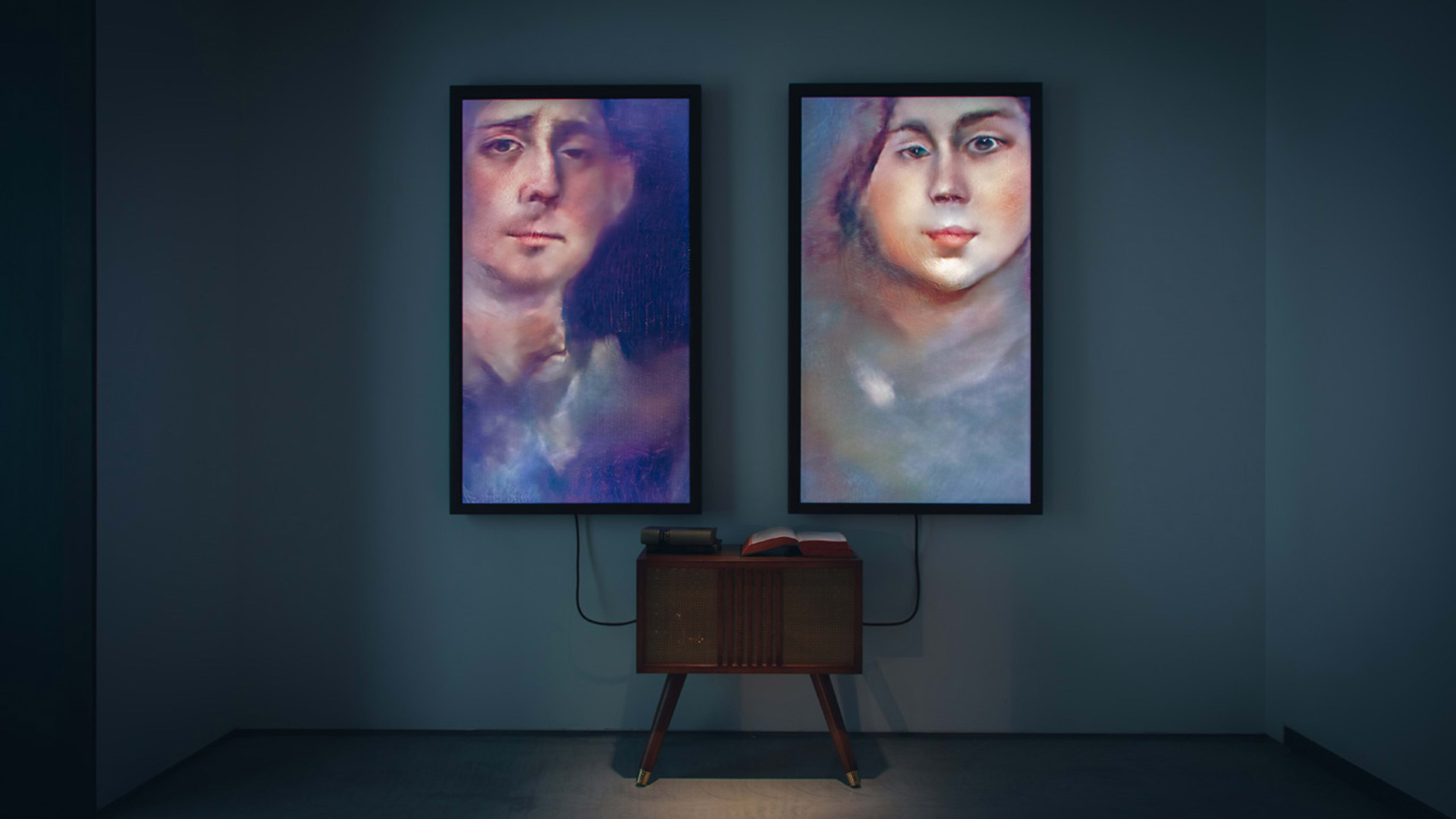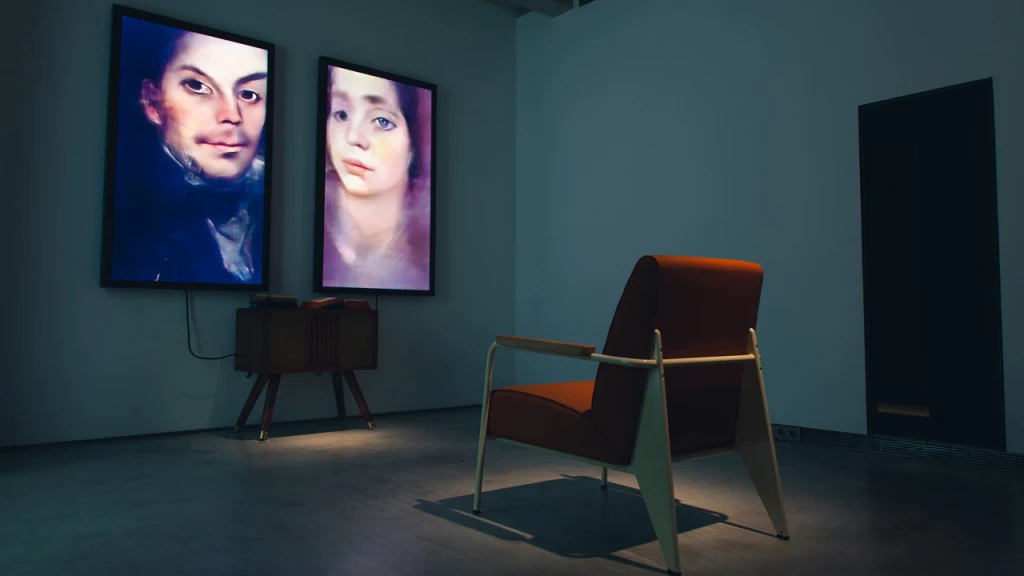Munich-based artist Mario Klingemann has been making art using algorithms for 25 years, posting his experiments online and showing the final results in galleries. He’s a leading artist working with AI today–but next month, Klingemann’s groundbreaking work will breach the commercial fine art establishment when one of his pieces goes up for auction at Sotheby’s for an estimated $38,500 to $51,000. Sotheby’s interest in his work points to the increasing cultural relevance of artwork that uses algorithms–and this type of art’s viability in the mainstream art market.
Memories of Passersby I is a computer system hidden inside of an antique-looking piece of furniture, which looks like a cross between a midcentury modern cabinet and an old-fashioned radio. The system is connected with wires to two large screens, which display human faces that the algorithm dreams up in real time on a constant loop. It’s almost entirely self-sufficient: Once you plug it in, the machine can start processing images and generating new portraits, as long as it’s on.
The work is built on the back of Klingemann’s other experiments, particularly his recent tinkerings with the Western art canon. It uses a generative adversarial network, a type of AI that is often used to make art, to generate its figures. The software consists of two neural networks trained on a dataset of public-domain paintings from the 17th to 19th centuries; one algorithm generates new portraits based on that dataset and the other critiques its work to improve it. The final result shifts and morphs on the two screens on the wall.
Memories of Passersby I consists of the neural network itself, generating images, in real time, right before the viewer’s eyes. According to Klingemann, the art is not the images, which disappear, but the computer code that creates them. That makes it distinct from other pieces of AI art that have made it to auction–most of which consist of a single unchanging image that was generated by an algorithm at some point in the past. For instance, an AI-generated painting by the French art collective Obvious sold at Christie’s in October. (It was also highly controversial because Obvious used an algorithm written by another artist, Robbie Barrat, then claimed the output was their own, raising questions about who is the artist when it’s an algorithm that’s actually generating the piece.)
But Memories of Passersby I‘s constant shifting evades that question entirely: For Klingemann, the algorithm is obviously the artwork because all of the individual images fade away. “The main difference between Memories of Passersby I and AI artwork which has appeared at auctions in the past is that it is not a finite artwork or a print, but consists of the ‘brain itself,'” Klingemann tells Fast Company via email. “It is self-contained, and self-generating.”

Beyond the tech, perhaps the most intriguing element of the work is Klingemann’s decision to use such an old-school piece of furniture as its casing. “Maybe Memories of Passersby I is bit like a Trojan Horse,” he says. “I wanted to give it an appealing, non-threatening appearance so it is welcome inside the gates, given a place to stay and access to someone’s power outlet.”
Klingemann has high hopes for this kind of automated artistic system. While he is certain that he is the artist of this work (just like the musician is the artist, not the piano he uses to make music), he would like to take himself out of the process as much as possible. “Can I make an art-making machine that could be considered autonomous or will there always be an umbilical cord that ties me to my creation?” he says. “Memories of Passersby I is one little step towards that goal and whilst it has a certain amount of autonomy it is still very much ‘me.’ So if I compare this to having children then what we have here is something like a newborn which is still very dependent on its parents. But I hope that at some point I will reach at least the five-year-old stage since that seems to be the legally required age to enter the art world.”
But despite his barb at the commercial art world, Klingemann says he’s happy to have the work auctioned off at Sotheby’s, one of the arbiters of that world. “Naturally I believe that AI art is very relevant in a time where machine intelligence is creeping into all aspects of our lives and starts challenging some core qualities of what we consider to be unique human abilities,” he says. “Just like contemporary artists have to add something relevant to the conversation of their time, auction houses must react to and cater for these new creations and demands.”
Ultimately, Memories of Passersby I is a groundbreaking piece that offers a glimpse at what the future of contemporary art might look like. Perhaps Klingemann will be able to automate himself out of the story entirely, and we’ll be able to enjoy visually stimulating works that constantly shift and change to suit the whims of code.
“I don’t want to go as far as to say that what we have here is an intelligent entity, but maybe it is a glimpse of a future symbiosis we might have with intelligent machines,” Klingemann says. “In this future we have machines that entertain us with interesting patterns of information in exchange for the energy we provide them with to ‘live.'”
And as Klingemann says, in this futuristic world we will still have one element of control left: the power switch.
Recognize your brand’s excellence by applying to this year’s Brands That Matter Awards before the early-rate deadline, May 3.








